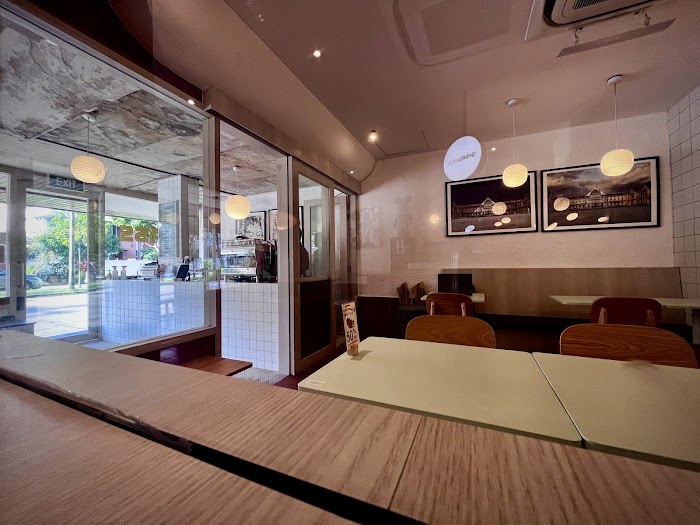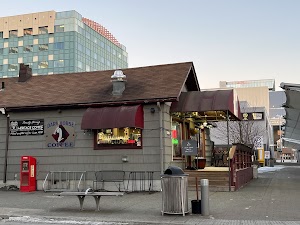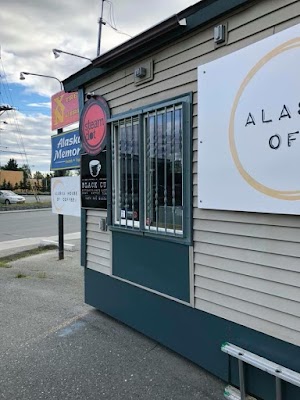Of course. Here is a 1500-word article based on the provided source content, complete with SEO-optimized headings and in-depth analysis.
Glass Roasters Singapore Review: Is This Hidden Faber Drive Gem Worth the Hype?
In the quiet, leafy enclave of Faber Drive, nestled away from the typical hustle and bustle of Singapore’s main café strips, sits Glass Roasters. With an impressive Google rating of 4.4 stars from over 200 reviews, it presents itself as a high-quality, sought-after destination for coffee lovers. Its location near Clementi Fire Station suggests a tranquil, neighbourhood vibe—a welcome escape for those seeking refuge from the city’s frantic pace.
However, a closer examination of individual customer experiences reveals a curious paradox. While the overall rating points to excellence, a collection of detailed reviews paints a far more complex and, at times, contradictory picture. Patrons speak of a beautiful, aesthetically pleasing space but lament lacklustre coffee. They praise the quiet atmosphere but decry poor service and a frustrating lack of basic amenities.
This deep dive aims to unravel the enigma of Glass Roasters. By synthesising and analysing customer feedback, we will explore every facet of the café—from its unique location and interior design to the quality of its core offerings and the functionality of its space. Is Glass Roasters a true hidden gem that lives up to its high rating, or is it a classic case of style over substance? Let’s find out.
The Allure of the Unexpected: Location and First Impressions
One of the most frequently highlighted aspects of Glass Roasters is its unconventional location. Situated at 108 Faber Drive, it’s described by reviewer Francis Kwang as “somewhat out of the way.” This isn’t a café you stumble upon while shopping on Orchard Road; it’s a destination that requires a deliberate journey. For many, this is a significant part of its charm.
Reviewer Daryl “Dino” captures this sentiment perfectly, noting that the location “gives a very homely and neighborhood vibe,” which he enjoys very much. In a city saturated with cookie-cutter cafes in predictable mall settings, a spot that feels integrated into a residential community offers a unique sense of authenticity and peace. The promise is one of a genuine local haunt, far from the madding crowd.
Furthermore, the café delivers on a practical advantage that is pure gold in land-scarce Singapore: parking. Francis Kwang points out that the parking is “limited but free as it was private to the shophouses.” This is a massive convenience, removing a common point of friction for customers who drive and immediately setting a positive tone before they even step through the door. The initial impression is one of a serene, accessible, and community-focused establishment.
A Tale of Two Spaces: Ambiance, Decor, and a Curious Layout
Upon entering Glass Roasters, customers are met with another of its defining features: a peculiar but visually appealing layout. The space is not solely dedicated to the café. As multiple reviewers note, Glass Roasters shares its premises with a gelato parlour, creating a divided yet connected environment.
The Coffee Corner
The section designated for Glass Roasters itself is described in glowing terms by Daryl, who awarded the café a 5-star rating based heavily on its aesthetics. He calls it a “cute little cafe with a light colored decor and ambiance to it,” praising the “windows that pour the natural light in.” This paints a picture of a bright, clean, and minimalist space that is highly photogenic—a key draw in the age of Instagram. However, he also notes that seating within this specific corner is “limited.”
The Shared Gelato Area
This is where the layout gets interesting. Francis describes the coffee corner as being partitioned by glass but connected to a “larger area with more ample seatings where they serve the gelatos.” It was in this more spacious area that he and his companion sat, finding it “very comfortable” on a quiet morning. This shared-space model is a double-edged sword.
Analysis: On one hand, this arrangement is a clever business strategy, allowing two complementary businesses to share rent and potentially cross-pollinate customers. A person coming for gelato might be tempted by coffee, and vice versa. It also solves the problem of limited seating in the coffee corner, providing a comfortable overflow area.
On the other hand, it can create a “weird” and disjointed customer experience, as Francis puts it. It dilutes the brand identity of Glass Roasters. Are you in a dedicated coffee roastery or a shared food court? The expansive, comfortable seating praised by patrons technically belongs to the adjacent business, which may explain some of the operational and service disconnects that we will explore later. While visually pleasing, the layout hints at an underlying identity crisis.
The Core Offering: A Critical Look at the Coffee and Drinks
For any establishment with “Roasters” in its name, the quality of its coffee is the ultimate measure of success. It implies a mastery of the craft, from bean sourcing and roasting to the final extraction. Unfortunately, this is where Glass Roasters appears to falter most significantly, according to the provided reviews.
The feedback on their beverages is consistently underwhelming.
- Coffee: Reviewer GG K found the coffee “not impressive,” while Francis deemed his macadamia coffee “forgettable and lacklustre in flavour.” Reviewer shzhong noted that the “white is slightly on the acidic side,” a comment echoed by Daryl, who felt the coffee “could improve a bit more on the balance between the acidity and bitterness,” though he still found it “acceptable.” The recurring theme of unbalanced acidity suggests potential issues with the roast profile, the brewing parameters, or the choice of beans. For a specialty roaster, this is a fundamental miss.
- Other Beverages: The disappointment extends to their non-coffee drinks. Francis’s matcha latte was also “forgettable.” Celinemy found the Taro latte “worth a try but a bit too sweet,” indicating a potential lack of balance in their specialty recipes. Perhaps most damning is the review of the Babycino by GG K, who called it “nothing special” and criticised its presentation in a paper cup as “not very appealing.” This small detail speaks volumes about a potential lack of care and attention to the overall customer experience.
Analysis: The consensus is clear: the drinks at Glass Roasters do not live up to the promise of its name or its high-end aesthetic. When multiple, unrelated customers describe beverages as “so-so,” “average,” and “forgettable,” it points to a systemic issue rather than a one-off bad day. An establishment can have a beautiful interior and a quiet location, but if the core product—in this case, expertly crafted coffee—is mediocre, it fails in its primary mission. This is the most significant dissonance between the café’s 4.4-star rating and the on-the-ground experience.
Beyond the Brew: Food and the Gelato Silver Lining
While coffee is the presumed star, the supporting cast of food and gelato provides further insight. The feedback on food is sparse but telling. Francis describes the banana cake as “dry and lacking in flavour,” another mark against the kitchen’s execution.
However, the co-located gelato parlour seems to be the saving grace. Reviewer shzhong found the “hazelnut ice cream is not bad a choice to go along with the waffle ice cream.” More importantly, Francis, despite his litany of complaints about the coffee, service, and cake, explicitly states, “I would return likely to try the gelato.” He was intrigued by their “few interesting flavours.”
Analysis: The gelato appears to be a more successful and compelling product than the coffee. This strengthens the theory that the positive reputation of the overall space might be buoyed by the gelato parlour. Customers may be rating their positive experience with the ice cream under the “Glass Roasters” Google Maps listing, inadvertently inflating the café’s score. It presents a scenario where the primary tenant, Glass Roasters, may be the weaker partner in this symbiotic business relationship.
The Human Element and Functional Flaws: Service and Amenities
A café experience is built on more than just its products; it’s shaped by the environment and the people. It is in these functional and service-oriented areas that some of the most concerning criticisms arise.
Service
Service can make or break a visit. Good service can elevate an average coffee, while poor service can sour even the best brew. Francis Kwang’s experience was unequivocally negative. He describes the service on the coffee side as “pretty poor,” encountering a staff member with a face that was “so surly and disgruntled” on a weekend morning. This is a cardinal sin in the hospitality industry, where a welcoming attitude is paramount.
Lack of Basic Amenities
Modern cafes are expected to provide certain basic amenities, especially if they wish to attract customers who might stay for more than a few minutes. Reviewer celinemy delivers a devastating list of functional failures:
- No Wi-Fi: In today’s connected world, this is a major drawback. It immediately alienates a huge segment of potential customers, from students to remote workers, and makes the café unsuitable for anyone needing to use a laptop.
- No Tap Water: Refusing to provide complimentary tap water is often perceived as poor hospitality and can leave a negative impression on customers who feel they are being nickel-and-dimed.
- Broken Restroom: While mechanical failures can happen, a broken restroom (forcing customers to borrow one next door) combined with the other issues paints a picture of operational neglect.
Analysis: These are not subjective matters of taste; they are objective failures in providing a functional, comfortable, and welcoming environment. The lack of Wi-Fi and tap water, coupled with reports of surly service, directly contradicts the tranquil and high-end image projected by the decor. It suggests a business that has prioritised surface-level aesthetics over the fundamental pillars of good hospitality.
The Verdict: Reconciling the 4.4 Rating with a Mixed Reality
We are left with a central question: How can a café with such significant, documented flaws in its core product, service, and amenities maintain a 4.4-star rating from over 200 reviews?
- The Power of Aesthetics: Daryl’s 5-star review is a key clue. He was completely won over by the ambiance, decor, and neighbourhood vibe, even while acknowledging the coffee needed improvement. In the Instagram era, the visual appeal of a space can often overshadow other elements for a large portion of visitors, who may leave a high rating based on a pleasant 30-minute stay and a few good photos.
- The Gelato Halo Effect: The positive mentions of the gelato suggest that many high ratings may be driven by the ice cream parlour. Customers enjoying their waffle and ice cream in the shared space may be attributing their positive experience to the “Glass Roasters” listing, thus masking the café’s shortcomings.
- Location, Location, Location: The quiet, residential setting and the rare perk of free parking are powerful draws. For local residents, the convenience and peaceful atmosphere may be enough to warrant a high rating, even if the coffee is merely “acceptable.”
Based on the evidence, Glass Roasters is a gamble. It offers the promise of a beautiful, tranquil escape but carries the significant risk of delivering a disappointing and frustrating experience. It may be a suitable spot for someone who prioritises aesthetics and quiet over all else, or for those specifically seeking out the well-regarded gelato.
However, for the discerning coffee aficionado, the digital nomad, or the customer who values warm service and basic hospitality, Glass Roasters is likely to fall short of expectations. To truly earn its high rating and become the gem it has the potential to be, the management must turn its attention away from the superficial and focus on the fundamentals: brewing a memorable cup of coffee, training staff to be welcoming, and providing the basic amenities that customers in the 21st century have come to expect. Until then, it remains a beautiful glass house with a shaky foundation.



